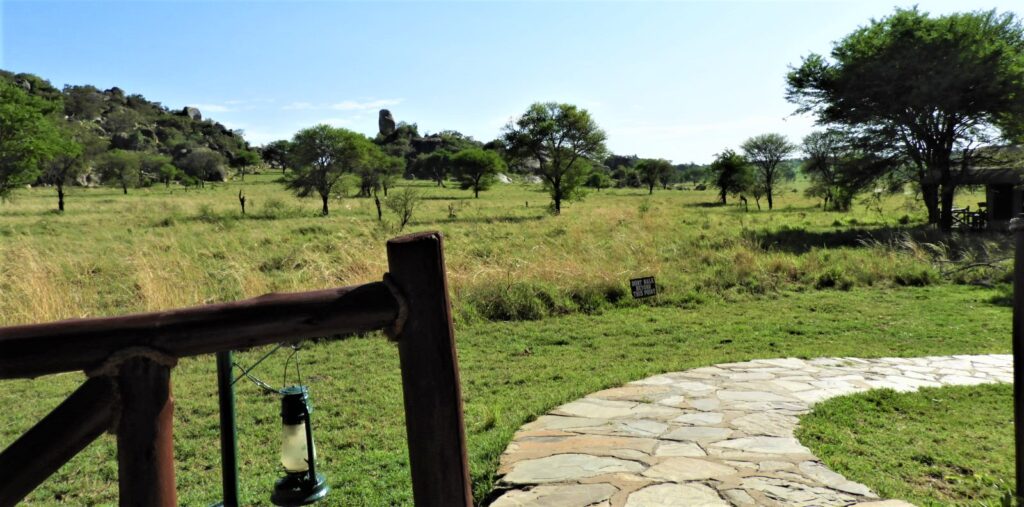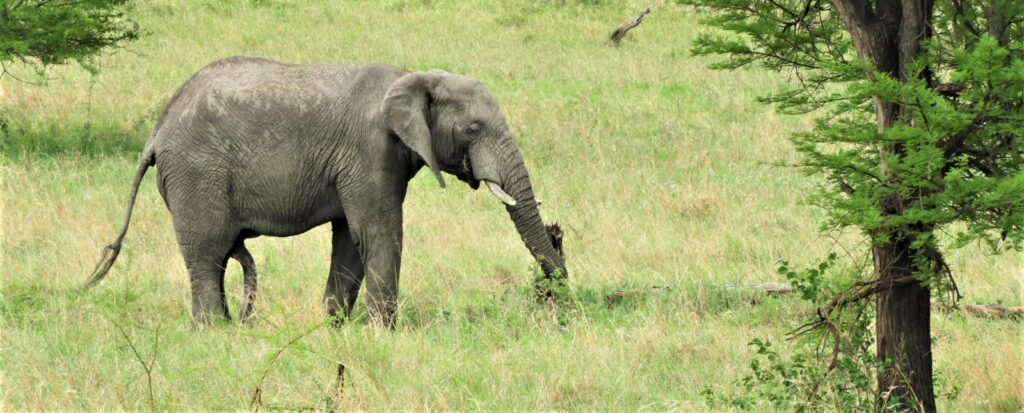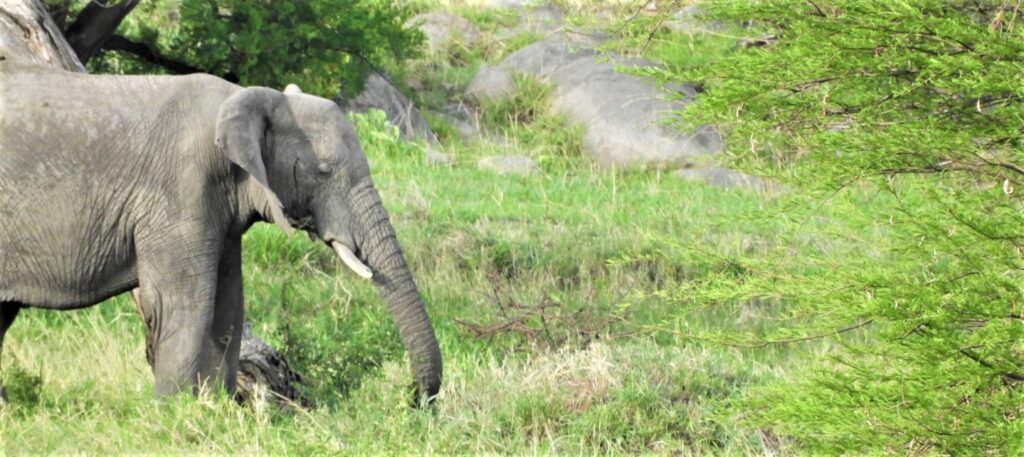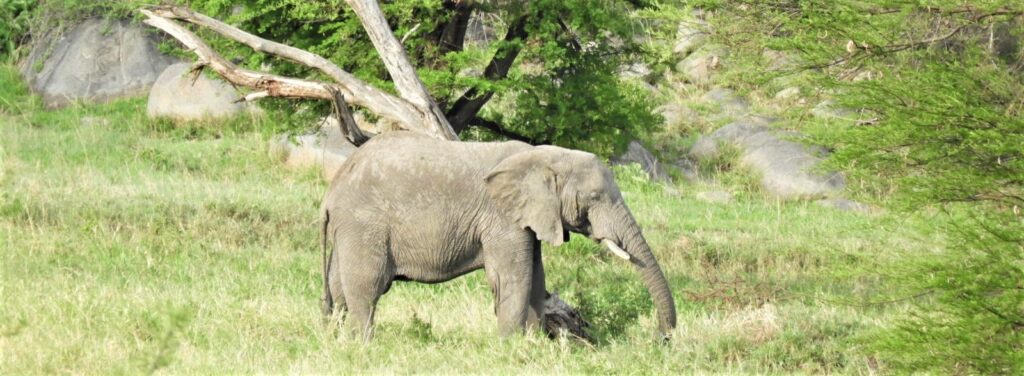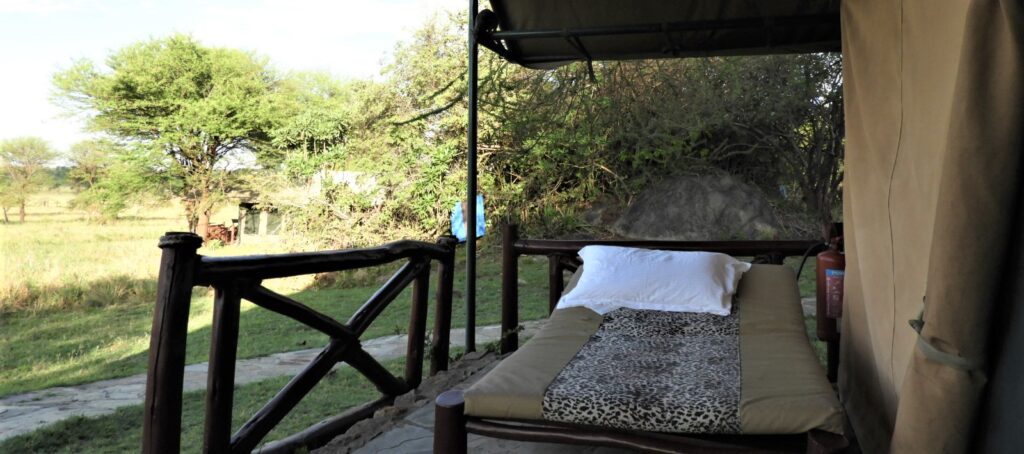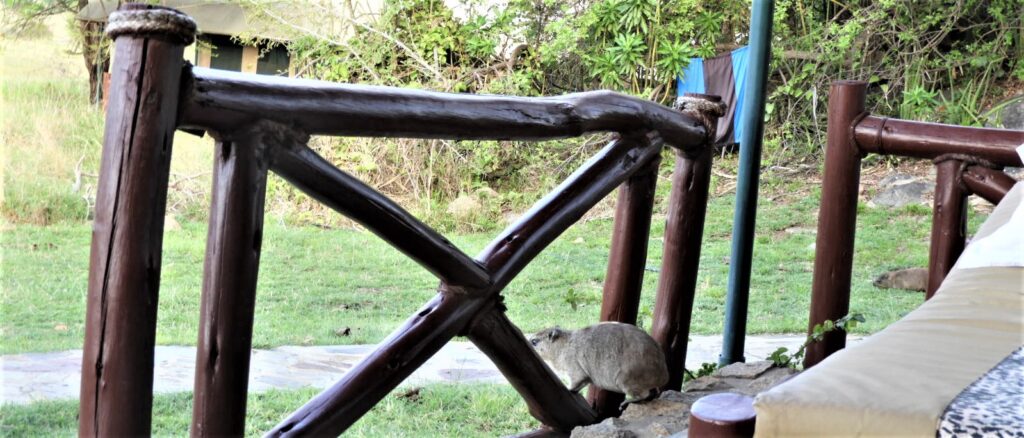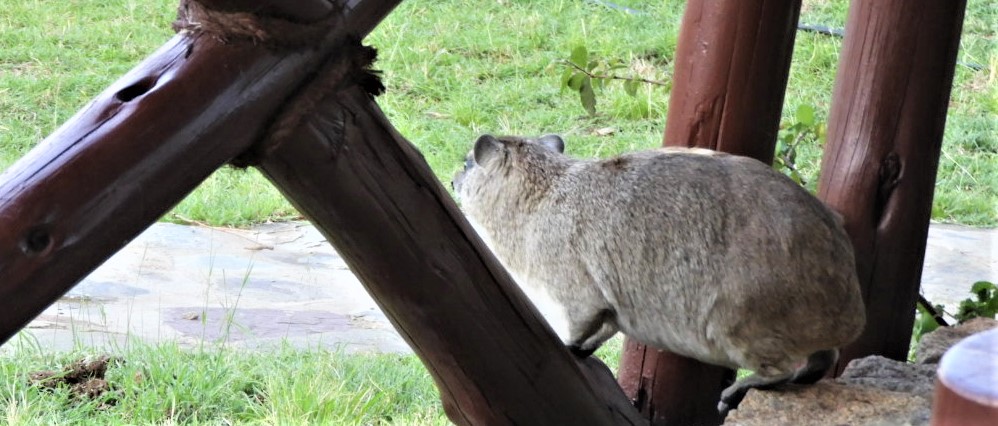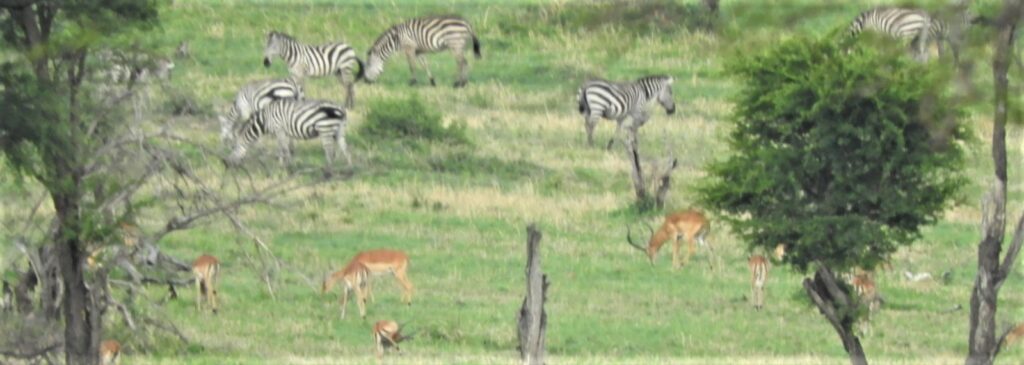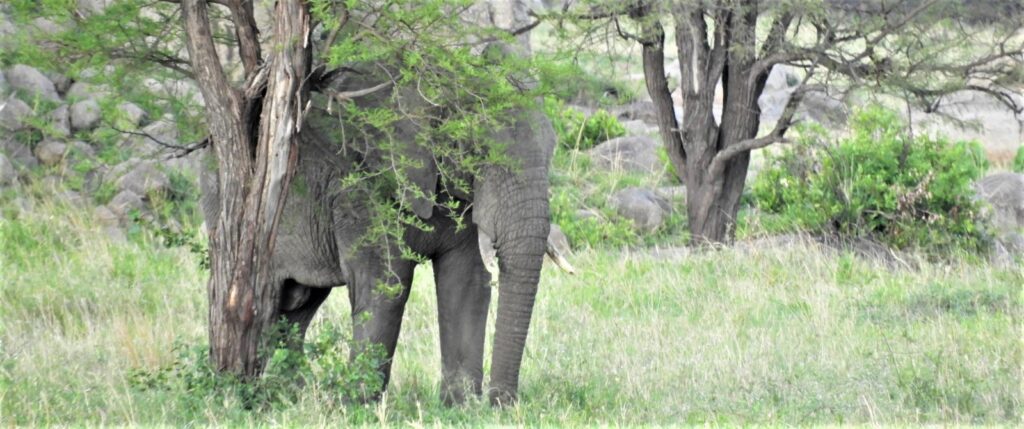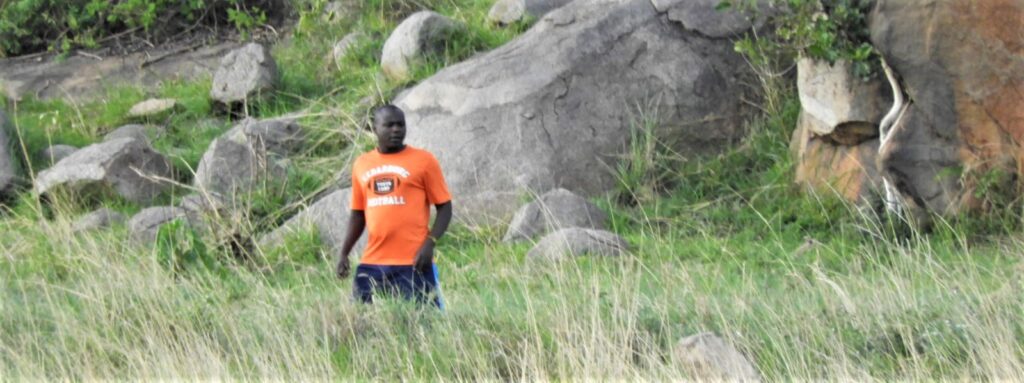» posted on Friday, September 23rd, 2022 by Linda Lou Burton
There’s An Elephant In My Yard
Linda Lou Burton posting from Mbuzi Mawe Serena Tented Camp, Serengeti National Park, Tanzania–There’s an elephant in my yard. That’s one thing I never expected to say. Live long enough and things you never knew you’d enjoy just show up. It happened today. I sat on my lovely little tent porch and watched an elephant grazing in my front yard. By the end of the afternoon, I’d also watched buffalo, zebra, antelope, and an orange-shirted jogger out there between me and the kopjes. The hyraxes scampered around my porch while this was going on. Who needs to go on a game drive looking for animals!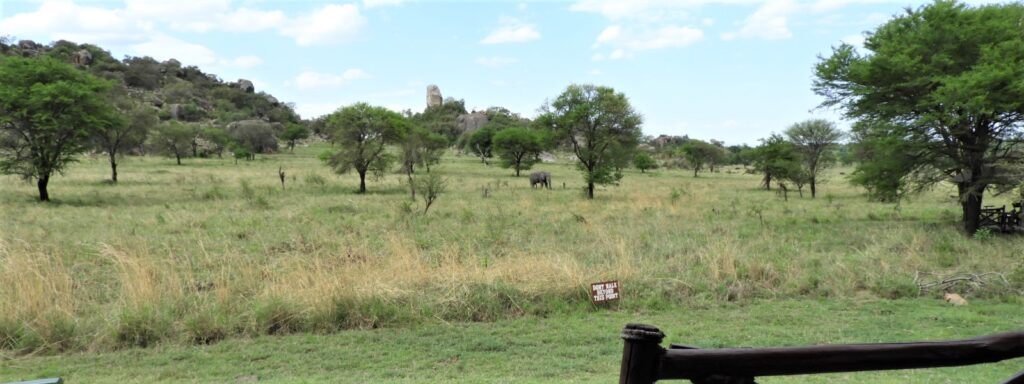
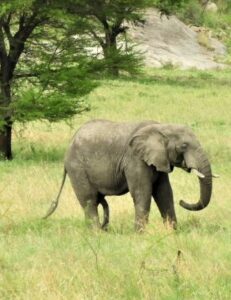 I was practically catatonic this morning when the gang headed for the 4x4s and a full day on the Serengeti. Rick promised to share his photos with me, so I slept. And slept. New Star, the lovely lady who had welcomed me in yesterday, brought me tea and breakfast, inquiring about my welfare (I suppose she’d been consigned to do so). She also offered her services for a massage, and we agreed on a time. Now, between a massage, a grassy lawn, and a slow munching elephant, a person is about as relaxed as a person can ever hope to be. So, totally relaxed, I give you your lessons for the day – about elephants, and kopjes.
I was practically catatonic this morning when the gang headed for the 4x4s and a full day on the Serengeti. Rick promised to share his photos with me, so I slept. And slept. New Star, the lovely lady who had welcomed me in yesterday, brought me tea and breakfast, inquiring about my welfare (I suppose she’d been consigned to do so). She also offered her services for a massage, and we agreed on a time. Now, between a massage, a grassy lawn, and a slow munching elephant, a person is about as relaxed as a person can ever hope to be. So, totally relaxed, I give you your lessons for the day – about elephants, and kopjes.
My elephant today – I named him Fred – was a young male. Males leave their family groups when they reach puberty and live alone, or with other males, interacting with female family groups only when looking for a mate. Fred didn’t appear to be looking for anything today other than the next bite of grass; he was relaxed, contented, and unbothered (like me). Fred was a nice elephant! He was the first young male I’d spotted; I’d seen the matriarchal family units at Ol Pejeta, Maasai Mara, and Amboseli, either a female with her calves or several related females with offspring. The girls stick together, kicking the male calves out around the age of three. Some elephant factoids:
- Elephants are the largest existing land animals and can live up to 70 years.
- Elephant species existing today are the African bush, the African forest, and the Asian.
- Elephant trunks are used for breathing, bringing food and water to their mouth, and grasping things.
- Elephant tusks are used as weapons, and as tools for moving things and digging.
- Elephants communicate by touch, sight, smell, and sound, using infrasound and seismic communication over long distances.
- Elephants have self-awareness and appear to show empathy for dying and dead family members.
I already knew most of that about elephants, but I had never heard of kopjes (hoping my geology professor isn’t reading this, maybe I forgot!). Kopjes (pronounced KOP EES), are the rock formations making the backdrop for Fred across my grassy yard this afternoon. Massive rocks! Ancient rocks! They originally formed and cooled under the surface of the earth from volcanic activity; over millions of years the surrounding softer rocks eroded, leaving these incredible, beautiful “mountain islands.” Gneiss.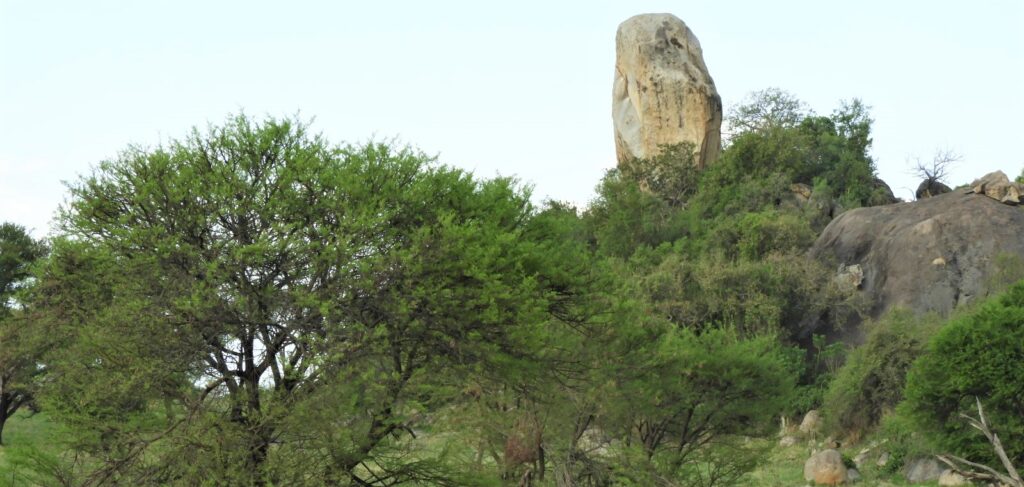
Why do lions, and leopards, hang out on the kopjes? What is nicer than a warm rock for a nap? Or what better vantage point for spotting dinner? A few more things make kopjes an interesting (and unique) environment.
- Water: hollows and cracks in the rocks store water for a long time, so mammals, birds, and plants can survive even if it’s completely dry all around.
- Plants: kopjes protect certain plants from mega-herbivores such as elephants and giraffe who can’t climb there; kopjes also protect plants from fires on the savannah.
- Nutrients: leaf litter and animal dung collect in the cracks of kopjes; lions and eagles bring their prey to the kopjes; all resulting in a flow of nutrients on a grand scale.
Pretty cool, these kopjes. But one thing I can’t puzzle out: it makes sense that my little rock hyraxes (I named them Ethel and Lucy) thrive on the kopjes and scamper every which way all day long. But why, I wondered, were the zebras, antelope, and even buffalo grazing peacefully beneath the kopjes this afternoon, possibly within view of a hungry lion? And why young Fred? And lord help us, why the orange-shirted jogger! See all below.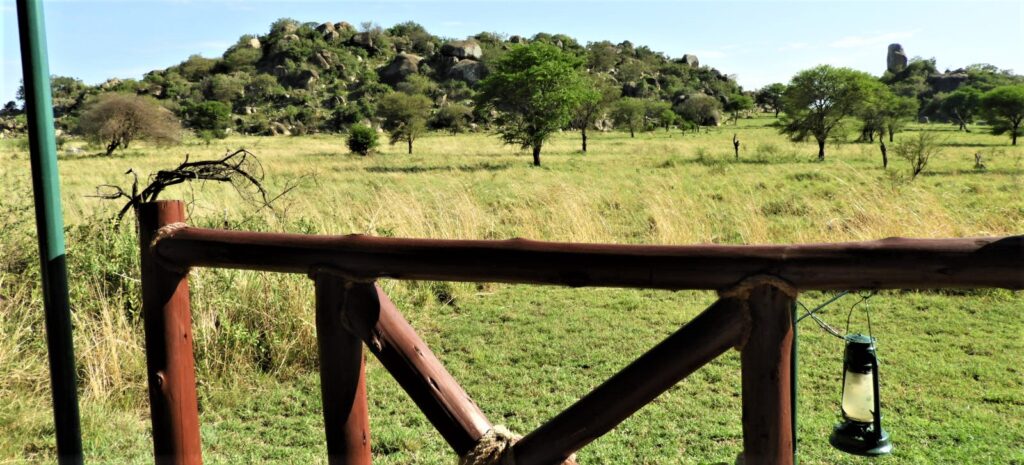
PS I tried my darndest to spot a tusk or flat nails on the hyraxes today, and even asked them if they were related to Fred, but they refused to comment. Be sure to note Lucy on top of the tent pole above my lounge chair. Ethel preferred to hang out on the bottom rail, watching Fred perhaps? Wondering?
Mbuzi Mawe Serena Tented Camp https://www.serenahotels.com/mbuzi-mawe
Serengeti National Park https://www.serengeti.com/
Next Post: You’ll Never Guess

